Rabu, 31 Agustus 2022
NASA reschedules Artemis I launch for Saturday, Sept. 3 - News 19 WLTX
https://news.google.com/__i/rss/rd/articles/CBMiK2h0dHBzOi8vd3d3LnlvdXR1YmUuY29tL3dhdGNoP3Y9ZWVBRG1ycXRQNGfSAQA?oc=5
2022-08-31 21:44:09Z
1546159078
How Giant Isopods Got Supersized - Hakai Magazine
Article body copy
Survival in the deep sea is inherently challenging: darkness abounds, the temperature is near freezing, and food is hard to come by. And yet, rather than wither in the harsh conditions, many deep-sea animals, from massive spider crabs to giant squid, adapt by growing supersized, dwarfing their shallow-water or terrestrial kin. Why these animals get so big has interested scientists for more than a century. Now, by asking a slightly different question—how do they get so big?—scientists are getting closer to an answer.
A team of researchers recently sequenced the genome of the giant isopod Bathynomus jamesi—a first for a deep-sea crustacean. With round, segmented bodies, giant isopods look like roly-polies—except they can grow as long and as heavy as a chihuahua. The team behind the work, led by Jianbo Yuan, a geneticist at the Chinese Academy of Sciences in Beijing, hopes the details hidden in the animal’s genetic code will help us better understand what’s going on behind the scenes, genetically speaking, with deep-sea gigantism.

Analyzing Bathynomus jamesi’s genes hints at how this giant isopod developed the key adaptations that allow it to thrive in the deep. Photo by Jianbo Yuan and Xiaojun Zhang
Giant isopods, or bathynomids, are the jumbo cousins of the armored crustaceans found milling around under fallen logs. While the smallest isopod species measures less than half a centimeter, bathynomids can grow 80 times longer. The niches isopods occupy are similarly varied: there are more than 10,000 known species, and they’re found everywhere from the bottom of the ocean to caves to mountaintops. This physiological and ecological diversity makes the isopod family tree the perfect place to hunt for clues about what drives adaptation fathoms below.
Among the most interesting questions, says Yuan, is whether or not today’s deep-sea giants simply stem from hefty ancestors—animals like anomalocarids, large arthropod predators that existed some 50 million years ago—or whether they evolved more recently under the pressures of life in the deep sea. In the case of giant isopods, their genome points to the latter explanation.
Like their bodies, bathynomid genomes are incredibly large. B. jamesi, the researchers found, has a high number of so-called jumping genes, transposable elements that can move from one place in the isopod’s genetic code to another. Jumping genes are linked to high rates of mutation, something the researchers think may make the isopod better equipped to deal with environmental stress.
Having a large number of genes is something B. jamesi shares with other deep-sea invertebrates. That invertebrates—organisms generally considered to be less complex than vertebrates—have evolved some of the most complex, adaptable genetic codes has baffled scientists since genome sequencing began.
Beyond revealing the size of its genome, the scientists’ delving into B. jamesi’s biology and genetics have also suggested possible explanations for a number of key adaptations the animal harnesses to thrive in the deep.
B. jamesi’s stomach, for instance, can expand to take up two-thirds of its body. This ensures that, when it can find food, it can gobble as much as possible. Yuan and the team also found in B. jamesi’s genes changes related to thyroid and insulin function, which likely boost the isopod’s ability to grow and absorb nutrients. In addition, they found a tweak that slows the breakdown of fat. Keeping extra junk in the trunk lets giant isopods go years without eating.
Alexis Weinnig, a deep-sea biologist and geneticist at the Leetown Research Laboratory in West Virginia who was not involved in the study, says she likes that Yuan and his team are trying to better understand deep-sea isopods through their genes. Living in the deep sea, isopods are hard to find and harder to study in the field. “I think getting into the basic genetics is going to be a big player in understanding the underlying reasons for gigantism,” she says.
Weinnig hopes the finding reminds people that beyond their potential to help make sense of a scientific quandary, deep-sea species deserve the limelight.
“We lose track of how incredible it is that these animals live on our planet,” says Weinnig. “They have to be resourceful across the board … with reproduction, with metabolic processing. Everything has to be used so that nothing is going to scrap.”
https://news.google.com/__i/rss/rd/articles/CBMiQGh0dHBzOi8vaGFrYWltYWdhemluZS5jb20vbmV3cy9ob3ctZ2lhbnQtaXNvcG9kcy1nb3Qtc3VwZXJzaXplZC_SAQA?oc=5
2022-08-31 07:01:30Z
CBMiQGh0dHBzOi8vaGFrYWltYWdhemluZS5jb20vbmV3cy9ob3ctZ2lhbnQtaXNvcG9kcy1nb3Qtc3VwZXJzaXplZC_SAQA
Artemis 1: NASA aims for second try at Moon rocket launch on Saturday - Euronews
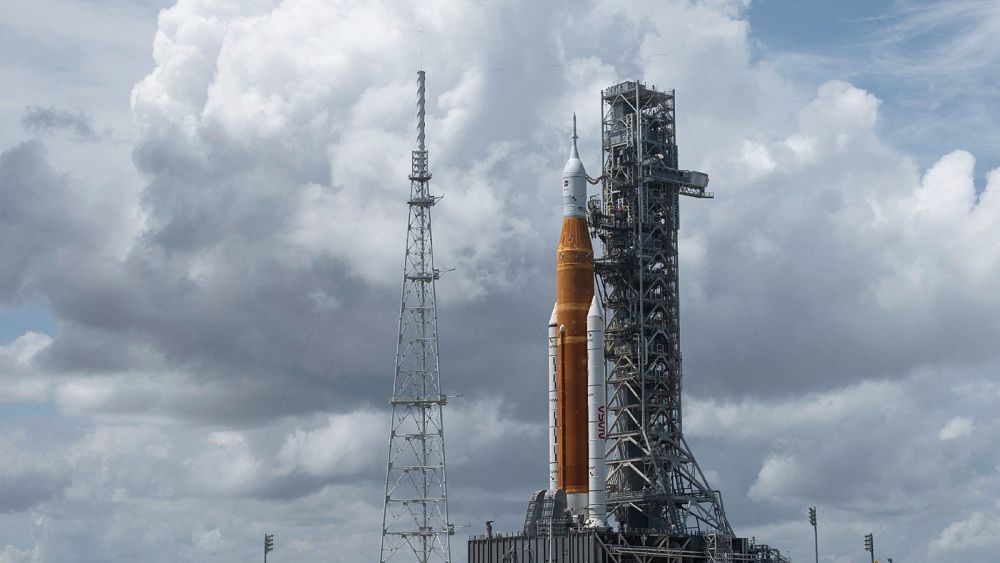
NASA hopes to make a second attempt to launch its giant new Moon rocket on Saturday, five days after a pair of technical issues forced it to postpone its widely anticipated lift-off.
The US space agency was initially due to launch on Monday (August 29) a rocket capable of putting astronauts on the Moon for the first time in 50 years, but it decided to cancel the flight at the last minute due to a fuel leak and an engine problem.
At a media briefing on Tuesday, NASA officials said the experience was useful in trouble-shooting some problems and that additional difficulties could be worked through in the midst of a second launch try.
In that way, the launch exercise was serving essentially as a real-time dress rehearsal that hopefully would conclude with an actual, successful lift-off.
However, prospects for success on Saturday appeared clouded by weather reports predicting just a 40 per chance chance of favorable conditions that day, while the US space agency acknowledged some outstanding technical issues remain to be solved.
For now, NASA officials said, plans call for keeping the 32-story-tall Space Launch System (SLS) rocket and its Orion astronaut capsule on its launch pad to avoid having to roll the massive spacecraft back into its assembly building for a more extensive round of tests and repairs.
If all goes as hoped, the SLS will blast off from the Kennedy Space Center in Cape Canaveral, Florida, on Saturday afternoon, during a two-hour launch window that opens at 2:17 pm local time (20:17 CET), sending the Orion on an uncrewed, six-week test flight around the Moon and back.
The long-awaited voyage would kick off NASA's Moon-to-Mars Artemis program, the successor to the Apollo lunar project of the 1960s and '70s, before US human spaceflight efforts shifted to low-Earth orbit with space shuttles and the International Space Station.
Why was the rocket launch scrubbed?
NASA's initial Artemis I launch attempt on Monday ended after data showed that one of the rocket's main-stage engines failed to reach the proper pre-launch temperature required for ignition, forcing a halt to the countdown and a postponement.
Speaking to reporters, mission managers said they believe a faulty sensor in the rocket's engine section was the culprit for the engine cooling issue.
As a remedy for Saturday's attempt, mission managers plan to begin that engine-cooling process roughly 30 minutes earlier in the launch countdown, NASA's Artemis launch director Charlie Blackwell-Thompson said. But a full explanation for the faulty sensor requires more data analysis by engineers.
"The way the sensor is behaving doesn't line up with the physics of the situation," said John Honeycutt, NASA's SLS program manager.
The sensor was last checked and calibrated months ago in the rocket factory, Honeycutt said. Replacing the sensor would require rolling the rocket back to its assembly building, a process that could delay the mission for months.
Why is the Artemis 1 mission so important?
The first voyage of the SLS-Orion, a mission dubbed Artemis I, aims to put the giant rocket through its paces in a rigorous demonstration flight pushing its design limits, before NASA deems it reliable enough to carry astronauts.
Named for the goddess who was Apollo's twin sister in ancient Greek mythology, Artemis seeks to return astronauts to the Moon's surface as early as 2025, though many experts believe that time frame will likely slip by a few years.
The last humans to walk on the Moon were the two-man descent team of Apollo 17 in 1972, following in the footsteps of 10 other astronauts during five earlier missions beginning with Apollo 11 in 1969.
Artemis also is enlisting commercial and international help to eventually establish a long-term lunar base as a stepping stone to even more ambitious human voyages to Mars, a goal NASA officials say would probably take until at least the late 2030s to achieve.
But NASA has many steps to take along the way, starting with getting the SLS-Orion vehicle into space.
https://news.google.com/__i/rss/rd/articles/CBMifWh0dHBzOi8vd3d3LmV1cm9uZXdzLmNvbS9uZXh0LzIwMjIvMDgvMzEvYXJ0ZW1pcy0xLW5hc2EtYWltcy1mb3Itc2Vjb25kLXRyeS1hdC1zbHMtbW9vbi1yb2NrZXQtbGF1bmNoLW9uLXNhdHVyZGF5LWFmdGVyLWRlbGF50gEA?oc=5
2022-08-31 05:57:24Z
1546159078
Selasa, 30 Agustus 2022
NASA plans to try another Artemis I launch on Saturday - CBC News
NASA is now targeting Saturday for the launch of its Artemis I mission, which looks to put an uncrewed spacecraft in orbit around the moon, after Monday's planned launch was scrubbed.
The U.S. space agency was forced to cancel that launch due to a problem with one of its rocket engines.
The Space Launch System (SLS) rocket and uncrewed Orion orbiter are part of NASA's planned return to the moon, called the Artemis program. This mission, Artemis I, will see the Orion spacecraft orbit the moon for a 42-day mission.

NASA races to get Artemis mission back on track after launch postponed
Artemis II is expected sometime in 2024 or 2025. Four astronauts — including a Canadian — will orbit the moon. And then finally, Artemis III — which will likely happen some time in the 2030s — will return humans to the lunar surface.
NASA hit several snags on Monday, and weren't able to resolve them all.
First it had to delay loading the rocket's propellant of liquid oxygen and liquid hydrogen due to nearby lightning.

'We don't launch until it's right,' says NASA administrator
Duration 0:57
Once the storms cleared, the propellant was not loading at the appropriate rate.
Then there was a helium leak — a problem experienced during the several "wet dress" rehearsals, a sort of mock launch during which technicians go through all the necessary steps and stop just before liftoff.
When everything looked to be clear — the main tank had loaded with propellant, and the secondary stage had as well — there was an issue with one of the four rocket engines. Engine No. 3 did not reach the proper temperature range necessary for liftoff, and the team ran out of time to fix it.
Launch weather officer Marc Berger says the weather expected on Saturday will be different from that of the previous week, when the area had several thunderstorms.
A sea breeze is expected to push inland, but that means there is a chance of thunderstorms and precipitation.
The SLS can not launch during any precipitation.
Berger said he remains optimistic that there may be some clear weather during the launch window.
If the launch is scrubbed due to weather, Artemis launch director Charlie Blackwell-Thompson said they could try again within 48 hours.
Saturday's two-hour launch window opens at 2:17 p.m. ET.
https://news.google.com/__i/rss/rd/articles/CBMiRWh0dHBzOi8vd3d3LmNiYy5jYS9uZXdzL3NjaWVuY2UvYXJ0ZW1pcy1pLWxhdW5jaC1yZXNjaGVkdWxlLTEuNjU2NzI4MdIBAA?oc=5
2022-08-30 23:31:20Z
1546159078
Senin, 29 Agustus 2022
Climate change: Greenland ice melt raises sea level - CTV News

Greenland’s rapidly melting ice sheet will eventually raise global sea level by at least 27 centimetres (10.6 inches) -- more than twice as much as previously forecast — according to a study published Monday.
That’s because of something that could be called zombie ice. That’s doomed ice that, while still attached to thicker areas of ice, is no longer getting replenished by parent glaciers now receiving less snow. Without replenishment, the doomed ice is melting from climate change and will inevitably raise seas, said study co-author William Colgan, a glaciologist at the Geological Survey of Denmark and Greenland.
“It’s dead ice. It’s just going to melt and disappear from the ice sheet,” Colgan said in an interview. “This ice has been consigned to the ocean, regardless of what climate (emissions) scenario we take now.”
Study lead author Jason Box, a glaciologist at the Greenland survey, said it is “more like one foot in the grave.”
The unavoidable ten inches in the study is more than twice as much sea level rise as scientists had previously expected from the melting of Greenland’s ice sheet. The study in the journal Nature Climate Change said it could reach as much as 30 inches (78 centimetres). By contrast, last year’s Intergovernmental Panel on Climate Change report projected a range of 2 to 5 inches (6 to 13 centimetres) for likely sea level rise from Greenland ice melt by the year 2100.
What scientists did for the study was look at the ice in balance. In perfect equilibrium, snowfall in the mountains in Greenland flows down and recharges and thickens the sides of glaciers, balancing out what’s melting on the edges. But in the last few decades there’s less replenishment and more melting, creating imbalance. Study authors looked at the ratio of what’s being added to what’s being lost and calculated that 3.3% of Greenland’s total ice volume will melt no matter what happens with the world cutting carbon pollution, Colgan said.
“I think starving would be a good phrase,” for what’s happening to the ice, Colgan said.
One of the study authors said that more than 110 trillion metric tonnes (120 trillion tons) of ice is already doomed to melt from the warming ice sheet’s inability to replenish its edges. When that ice melts into water, if it were concentrated only over the United States, it would be 11 metres (37 feet) deep.
The figures are a global average for sea level rise, but some places further away from Greenland would get more and places closer, like the U.S. East Coast, would get less. Although 10.6 inches may not sound like much, this would be over and above high tides and storms, making them even worse, so this much sea level rise “will have huge societal, economic and environmental impacts,” said Ellyn Enderlin, a geosciences professor at Boise State University, who wasn’t part of the study.
“This is a really large loss and will have a detrimental effect on coastlines around the world,” said NYU’s David Holland who just returned from Greenland, but is not part of the study.
This is the first time scientists calculated a minimum ice loss — and accompanying sea level rise — for Greenland, one of Earth’s two massive ice sheets that are slowly shrinking because of climate change from burning coal, oil and natural gas. Scientists used an accepted technique for calculating minimum committed ice loss, the one used on mountain glaciers for the entire giant frozen island.
Pennsylvania State University glaciologist Richard Alley, who wasn’t part of the study but said it made sense, said the committed melting and sea level rise is like an ice cube put in a cup of hot tea in a warm room.
“You have committed mass loss from the ice,” Alley said in an email. “In the same way, most of the world’s mountain glaciers and the edges of Greenland would continue losing mass if temperatures were stabilized at modern levels because they have been put into warmer air just as your ice cube was put in warmer tea.”
Time is the key unknown here and a bit of a problem with the study, said two outside ice scientists, Leigh Stearns of the University of Kansas and Sophie Nowicki of the University of Buffalo. The researchers in the study said they couldn’t estimate the timing of the committed melting, yet in the last sentence they mention, “within this century,” without supporting it, Stearns said.
Colgan responded that the team doesn’t know how long it will take for all the doomed ice to melt, but making an educated guess, it would probably be by the end of this century, or at least by 2150.
Colgan said this is actually all a best case scenario. The year 2012 (and to a different degree 2019) was a huge melt year, when the equilibrium between adding and subtracting ice was most out of balance. If Earth starts to undergo more years like 2012, Greenland melt could trigger 78 centimetres (30 inches) of sea level rise, he said. Those two years seem extreme now, but years that look normal now would have been extreme 50 years ago, he said.
“That’s how climate change works,” Colgan said. “Today’s outliers become tomorrow’s averages.”
https://news.google.com/__i/rss/rd/articles/CBMidmh0dHBzOi8vd3d3LmN0dm5ld3MuY2EvY2xpbWF0ZS1hbmQtZW52aXJvbm1lbnQvem9tYmllLWljZS1mcm9tLWdyZWVubGFuZC13aWxsLXJhaXNlLXNlYS1sZXZlbC0yNy1jZW50aW1ldHJlcy0xLjYwNDc3MjjSAQA?oc=5
2022-08-30 00:43:00Z
1544408384
Greenland already locked in to huge sea level rise: Study - Al Jazeera English
The 27cm predicted sea rise is more than twice as much as scientists previously expected from Greenland’s melting ice sheet.
Greenland’s fast-melting ice sheet will cause a huge sea level rise with potentially ominous implications over this century as temperatures continue to rise, according to a study published on Monday.
Melting “zombie” ice from the enormous Greenland ice sheet will eventually raise the global sea level by at least 27 centimetres (10 inches) just on its own. “Zombie”, or doomed ice is still attached to thicker areas of the sheet but is no longer getting fed by larger glaciers.
The study in the journal Nature Climate Change said sea rise could reach as much as 78cm (30 inches) – enough to swamp vast swathes of low-lying coastlines and supercharge floods and storm surges.
This should serve “as an ominous prognosis for Greenland’s trajectory through a 21st century of warming”, the authors said.
By contrast, last year’s Intergovernmental Panel on Climate Change (IPCC) report projected a range of 6-13cm (2-5 inches) for likely sea level rise from Greenland ice melt by the year 2100.
Glaciologists found regardless of any future fossil fuel pollution, warming to date will cause the Greenland ice sheet to shed 3.3 percent of its volume, committing 27.4cm sea level rise.
The study’s lead author Jason Box, a glaciologist at the Greenland survey, said it is “like one foot in the grave”.
Co-author William Colgan, a glaciologist at the Geological Survey of Denmark and Greenland, said: “This ice has been consigned to the ocean, regardless of what climate [emissions] scenario we take now.”

‘Radically different’ methodology
The theory that researchers used was initially developed to explain changes in Alpine glaciers, said Box.
This holds if more snow piles up on top of a glacier, it causes lower areas to expand. In this case, the reduced snow is shrinking in lower parts of the glacier as it rebalances, he said.
Box said the methods his team used were “radically different” from computer modelling but could complement this work to predict the effects of sea level rise in the coming decades.
He said while climate change was raising more immediate threats such as food security, the accelerating pace of sea level rise will become a huge challenge.
“It’s kind of decades in the future when it will just force its way onto the agenda because it will begin displacing people more and more and more,” said Box.

This is the first time scientists calculated a minimum ice loss – and accompanying sea level rise – for Greenland, one of Earth’s two gigantic ice sheets that are slowly shrinking because of climate change from burning coal, oil and natural gas.
The world has warmed an average of nearly 1.2 degrees Celsius (2.4 Fahrenheit) since pre-industrial times, unleashing a catalogue of impacts from heatwaves to more intense storms.
Under the Paris climate deal, countries have agreed to limit warming to 2C (4.0F).
But in their report on climate effects this year, the IPCC said that even if warming is stabilised at 2C to 2.5C (35.6F to 36.5F) “coastlines will continue to reshape over millennia, affecting at least 25 megacities and drowning low-lying areas”, which were home to up to 1.3 billion people in 2010.
Colgan said his research team does not know how long it will take for all the doomed ice to melt, but making an educated guess it would probably be by the end of this century, or at least by 2150.
https://news.google.com/__i/rss/rd/articles/CBMiYWh0dHBzOi8vd3d3LmFsamF6ZWVyYS5jb20vbmV3cy8yMDIyLzgvMjkvem9tYmllLWljZS1mcm9tLWdyZWVubGFuZC13aWxsLXJhaXNlLXNlYS1sZXZlbC0xMC1pbmNoZXPSAWVodHRwczovL3d3dy5hbGphemVlcmEuY29tL2FtcC9uZXdzLzIwMjIvOC8yOS96b21iaWUtaWNlLWZyb20tZ3JlZW5sYW5kLXdpbGwtcmFpc2Utc2VhLWxldmVsLTEwLWluY2hlcw?oc=5
2022-08-29 20:26:27Z
1544408384
Minggu, 28 Agustus 2022
Excitement builds as NASA’s moon rocket readies for liftoff - Al Jazeera English

NASA’s most powerful rocket yet is set to blast off on its debut test flight, kicking off the United States space agency’s mission to take humans back to the moon and eventually to Mars.
Fifty years after the last Apollo mission, the Artemis mission will get underway with the blast off of the unmanned Space Launch System (SLS) rocket at 8:33am (12:33 GMT) from the Kennedy Space Center in Florida on Monday.
Tens of thousands of people, including US Vice President Kamala Harris, are expected to watch the launch, with hotels around Cape Canaveral booked out for the event.
“This mission goes with a lot of hopes and dreams of a lot of people. And we now are the Artemis generation,” NASA Administrator Bill Nelson said on Saturday.
The goal of the six-week test flight, named Artemis 1, is to test the SLS and the Orion crew capsule that sits atop the rocket. The capsule will orbit the moon to see if the vessel is safe for people in the near future.
In lieu of astronauts, three test dummies are strapped into the capsule to measure vibration, acceleration and radiation, one of the biggest hazards to humans in deep space.
The capsule alone has more than 1,000 sensors.
The SLS-Orion combo, standing 98 metres (322 feet) tall, form the centrepiece of the US space agency’s successor to the Apollo moon programme of the 1960s and 1970s. Billed as the most powerful, complex rocket in the world, the SLS represents the biggest new vertical launch system NASA has built since the Saturn V flown for Apollo.
The next mission, Artemis 2, will take astronauts into orbit around the Moon without landing on its surface. If the first two Artemis missions succeed, NASA is aiming to land astronauts back on the moon, including the first woman to set foot on the lunar surface, as early as 2025, though many experts believe that timeframe is likely to slip by a few years.
The last humans to walk on the moon were the two-man descent team of Apollo 17 in 1972, following in the footsteps of 10 other astronauts during five earlier missions beginning with Apollo 11 in 1969.
The Artemis programme seeks to eventually establish a long-term lunar base as a stepping stone to even more ambitious astronaut voyages to Mars, a goal that NASA officials have said will probably take until at least the late 2030s to achieve.
Jack Burns, an astrophysicist at the University of Colorado in Boulder, said the Artemis missions will be utilising new technology not available during the Apollo mission.
“Going forward to the moon is the right way to describe it, because it’s not your grandfather’s Apollo programme,” he told Al Jazeera. “This is all new technology, new motivation, new opportunity. Bringing all that technology to the moon is going to be exciting.”
NASA said there is an 80 percent chance of acceptable weather for a liftoff on time at the beginning of a launch window lasting two hours.
“Everything to date looks good from a vehicle perspective,” said Jeff Spaulding, senior NASA test director. “We are excited, the vehicle is ready, it looks great.”
Although lightning rods at the launch site were struck during a storm on Saturday, Spaulding said he has not “seen anything on the ground systems that give us any concerns”.
NASA said there was no damage to the spacecraft or launch facilities.
If the countdown clock is halted for any reason, NASA has set September 2 and September 5 as potential backup launch dates.
Al Jazeera’s Manuel Rapalo said the excitement from spectators at Cape Canaveral was palpable.
“Years overdue, and billions over budget, the moment is almost here for the launch of Artemis I, with more than 100 000 people expected to attend, all of them collectively crossing their fingers for a successful lift-off,” he said.
https://news.google.com/__i/rss/rd/articles/CBMiZGh0dHBzOi8vd3d3LmFsamF6ZWVyYS5jb20vbmV3cy8yMDIyLzgvMjkvZXhjaXRlbWVudC1idWlsZHMtYXMtbmFzYXMtbW9vbi1yb2NrZXQtcmVhZGllcy1mb3ItbGlmdC1vZmbSAWhodHRwczovL3d3dy5hbGphemVlcmEuY29tL2FtcC9uZXdzLzIwMjIvOC8yOS9leGNpdGVtZW50LWJ1aWxkcy1hcy1uYXNhcy1tb29uLXJvY2tldC1yZWFkaWVzLWZvci1saWZ0LW9mZg?oc=5
2022-08-29 04:02:59Z
1546159078
Sabtu, 27 Agustus 2022
Perseverance rover uncovers clues to the history of Mars - Digital Trends
Even though we’re learning more about Mars than ever before thanks to rovers, orbiters, and landers visiting the planet, there’s still a whole lot we have to learn about how Mars formed, its history, and what it’s made up of now. The Perseverance rover has been exploring Mars’ Jezero crater since it landed there in 2021, and now scientists have released a batch of new research which could help us get a better understanding of the planet’s history and geology.
One big finding is that rocks that Perseverance has found on the floor of the Jezero crater are igneous rocks, formed from cooling lava. That’s exciting because it helps scientists to put dates on events in Martian history, such as when the rocks interacted with water. “From a sampling perspective, this is huge,” said one of the researchers, David Shuster of the University of California, Berkeley, in a statement. “The fact that we have evidence of aqueous alteration of igneous rocks — those are the ingredients that people are very excited about, with regard to understanding environmental conditions that could potentially have supported life at some point after these rocks were formed.”

“One great value of the igneous rocks we collected is that they will tell us about when the lake was present in Jezero. We know it was there more recently than the igneous crater floor rocks formed,” explained Ken Farley of Caltech, Perseverance’s project scientist and the lead author of one of the recent papers in another statement. “This will address some major questions: When was Mars’ climate conducive to lakes and rivers on the planet’s surface, and when did it change to the very cold and dry conditions we see today?”
Igneous rocks are great for understanding the history of water on the planet, but they aren’t so good for another of Perseverance’s jobs: looking for signs of ancient life. If there ever was life on Mars, our best hope of finding evidence of it would be to look at sedimentary rocks, which often form in watery conditions when layers of sediment are carried through lakes or rivers.
To find these sedimentary rocks, Perseverance is currently exploring an area of Jezero where there was once a river delta. This delta will be rich in sedimentary rocks which Perseverance is collecting samples from so they can be brought back to Earth for study in a future Mars Sample Return mission.
Editors' Recommendations
https://news.google.com/__i/rss/rd/articles/CBMiTGh0dHBzOi8vd3d3LmRpZ2l0YWx0cmVuZHMuY29tL3NwYWNlL3BlcnNldmVyYW5jZS1yb3Zlci1tYXJzLWhpc3RvcnktZ2VvbG9neS_SAQA?oc=5
2022-08-27 17:14:22Z
1544891939
Artemis 1 moon mission set for launch: What you need to know - ABC News
NASA on Monday will send an unmanned space shuttle into the moon’s orbit, marking the initial launch in an ambitious plan to establish a long term presence on the moon for scientific discovery and economic development.
The space shuttle, called Artemis 1, will travel for roughly 40 days — reaching as close as 60 miles from the moon, and then 40,000 miles above the moon when orbiting over its dark side — before landing in the Pacific Ocean off the coast of San Diego.
Vice President Kamala Harris will attend the launch at the Kennedy Space Center in Merritt Island, Florida, the White House said on Friday. At least 100,000 people will also watch on the beaches along Cape Canaveral as the shuttle takes off, Florida tourism officials estimated.
If the launch proves successful, NASA will send a crew to the moon's orbit on Artemis 2 in 2024. Eventually, the Artemis expedition as a whole could lead to the first crewed space trip to Mars, NASA says.
Here’s everything you need to know about the launch on Monday:
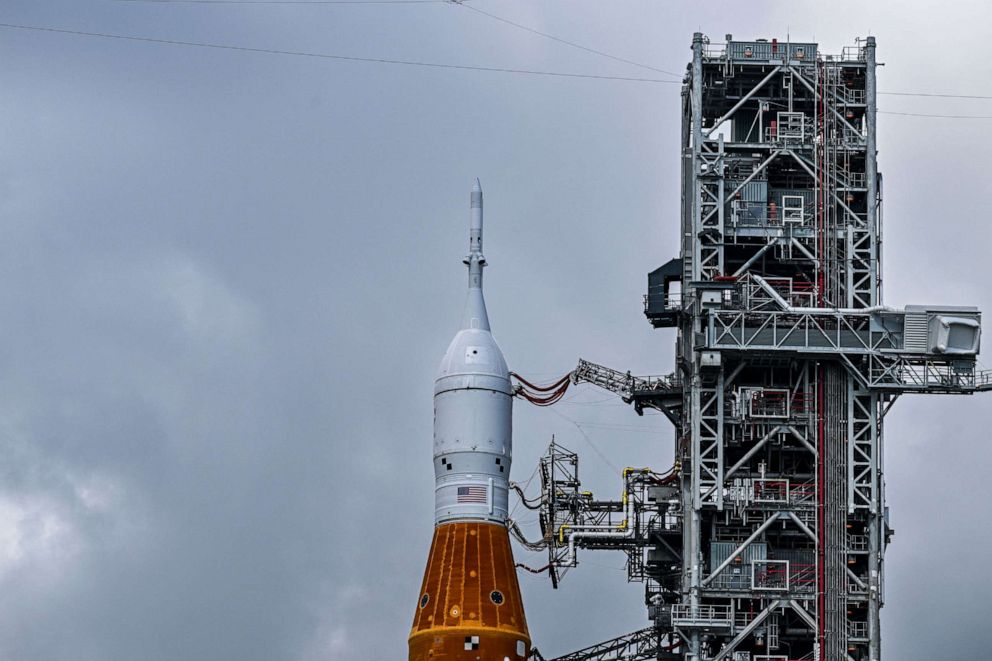
The Artemis I rocket sits on the launch pad at Kennedy Space Center in Cape Canaveral, Florida, on August 26, 2022, ahead of its expected launch on August 29.
Chandan Khanna/AFP via Getty Images
When is the launch?
A two-hour launch window begins on Monday at 8:33 a.m. ET, meaning the launch could take place anytime over the ensuing two-hour period. But the launch may not take place on Monday morning, as NASA abides by a strict set of weather criteria that determine whether a flight can proceed.
Meteorologists with the U.S. Space Force Space Launch Delta 45 predicted a 70% chance of favorable weather conditions for the launch window on Monday morning, according to a NASA blog post on Thursday.
The launch will be postponed, for instance, if the temperature at both 132.5 feet and 257.5 feet exceeds 94.5 degrees Fahrenheit for 30 consecutive minutes. NASA imposes additional weather restrictions, some of which depend on wind and humidity conditions.
If the launch does not take place on Monday, a second two-hour launch wind will begin on Friday, Sept. 2 at 12:38 a.m. ET. If NASA postpones the second launch, a third two-hour window will begin on Monday Sept. 5 at 5:12 p.m. ET.
How do you watch the launch?
ABC News will broadcast the launch live on Monday. Coverage will start at about 8:30 a.m. ET, just as the time window begins. ABC News may not broadcast from the launch if the take off is postponed before the time window starts.
In addition, NASA will broadcast the launch on its website . Eager viewers can watch an ongoing livestream of the launch site on YouTube.
What will the launch event entail?
NASA's live broadcast of the launch will include celebrity appearances by Jack Black, Chris Evans, and Keke Palmer, as well as a special performance of “The Star-Spangled Banner” by Josh Grobin and Herbie Hancock.
The event will also feature a performance of “America the Beautiful” by The Philadelphia Orchestra and cellist Yo-Yo Ma, conducted by Yannick Nézet-Séguin.
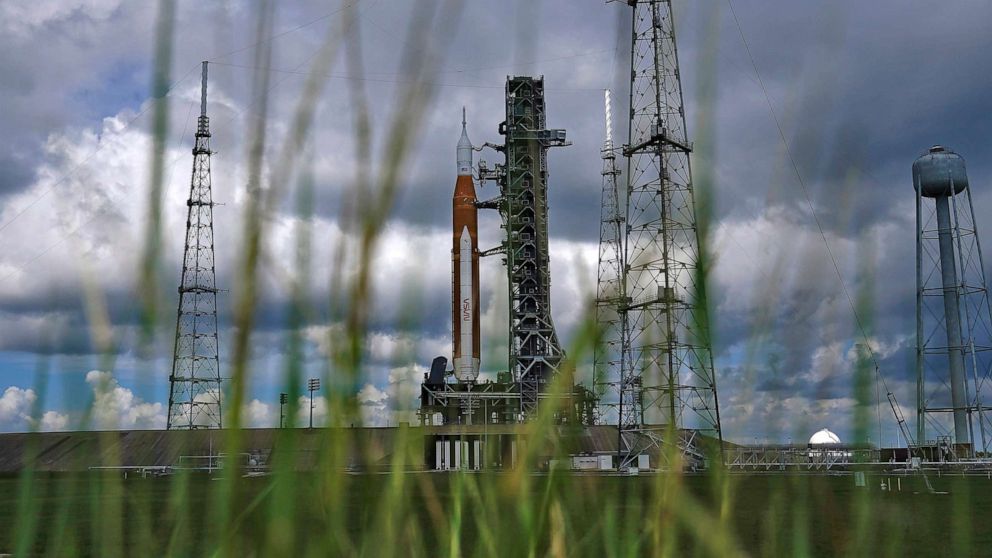
The Artemis 1 rocket is framed by tall grass as she stands ready on Launch Pad 39-B at the Kennedy Space Center, Aug. 26, 2022, in Cape Canaveral, Fla.
Brynn Anderson/AP
When is the shuttle coming back?
If the shuttle takes off on Monday morning, the mission will last for 42 days, after which the shuttle will splash down in the Pacific Ocean off the coast of San Diego on Oct. 10 at 11:53 a.m. ET.
If the shuttle takes off during the second launch window, on Sept. 2, the mission will last 39 days with a splashdown in the Pacific on Oct. 11; while a launch during the third window, on Sept. 5, would last 42 days and end on Oct. 17.
What's next for the Artemis expedition?
On the whole, the Artemis expedition includes four missions, each of which will cost roughly $4.1 billion. In all, the project will cost up to $93 billion by 2025, according to an audit from the NASA Office of the Inspector General.
If Artemis 1 is successful, Artemis 2 will take four astronauts near the moon in 2024. After that, Artemis 3 will take a crewed shuttle for a moon landing. Finally, Artemis 4 will fly to a space station near the moon.
NASA hopes that the Artemis expedition will enable a crewed trip to Mars in the ensuing years.
https://news.google.com/__i/rss/rd/articles/CBMiS2h0dHBzOi8vYWJjbmV3cy5nby5jb20vVVMvYXJ0ZW1pcy1tb29uLW1pc3Npb24tc2V0LWxhdW5jaC9zdG9yeT9pZD04ODkwMDczNNIBT2h0dHBzOi8vYWJjbmV3cy5nby5jb20vYW1wL1VTL2FydGVtaXMtbW9vbi1taXNzaW9uLXNldC1sYXVuY2gvc3Rvcnk_aWQ9ODg5MDA3MzQ?oc=5
2022-08-27 09:06:27Z
1546159078
Jumat, 26 Agustus 2022
Brock scientist and student contribute to new Mars research - St. Catharines Standard
For a few Brock University students taught by professor Mariek Schmidt, an opportunity to assist in her research has literally sent them “over the moon.”
Schmidt, a geologist who studies igneous and volcanic rocks on both Earth and Mars, is one of a team of world-renowned scientists collaborating on the Perseverance rover mission underway on Mars, searching the Jezero crater for signs of ancient life on the desolate world.
Thursday, about 18 months after the rover touched down on Mars, Schmidt’s team led by Yang Liu at NASA’s Jet Propulsion Laboratory published its first research paper on the science.org website, analysing a massive rock formation on the planet’s surface.
Schmidt said Brock post-doctoral fellow Tanya Kizovski assisted with the research for that paper, while two other master’s students will be working with her on future research she’s conducting.
“They love it. They’re really enthusiastic about it,” she said.
Schmidt, an earth sciences professor at the university, said one of her students accompanied her on a visit to the Jet Propulsion Lab in California last week, “and he was over the moon.”
“He was just taking pictures of everything,” she said, adding the visit also gave them a look at future projects under development such as the Europa Clipper — a spacecraft being built to search for life under the ice of one of Jupiter’s frozen moons.
“He got to meet a lot of people. For students, they think of these people as sort of heroes, but for me they’re just my colleagues,” she said, laughing.
Schmidt’s research focused on the rover’s Planetary Instrument for X-Ray Lithochemistry (PIXL), which uses an X-ray fluorescence spectrometer to determine the composition of Martian regolith.
The research paper focused on the origins of a 70,000 square kilometre rock formation that contains high abundances of olivine, a mineral considered essential in the development of life. Schmidt said microbes on Earth have been known to eat olivine, which contains oxygen and iron.
“It’s huge. Its this wide-spread area,” she said, adding the formation extends from the planet’s norther lowlands through to the Jezero crater, located north of the Martian equator.
“This large olivine-bearing unit is something we’ve been able to identify from orbit and there has been a lot of studies that have been speculating about its origin,” she said, adding some of those studies suggested it could be associated with a meteor impact.
Schmidt said the new study, however, showed the formation is the result of slowly cooling magma, from volcanism or an impact.
“This study shows it’s an igneous rock — at least in the Jezero crater — that crystallized from magma and that’s really cool that we’re able to say what the origin is in this particular area.”
While the search for ancient life is a priority for the Perseverance rover, Schmidt said there are other goals associated with the mission such as learning more about the planet’s history.
But to determine when rock formations were formed, she said they will need to be returned to Earth.
RELATED STORIES
“We can use radiometric isotopes to determine when that rock crystallized or formed. But we don’t have that ability with rovers right now or with landers to be able to find out how old a rock is,” Schmidt said.
Although previous Mars missions have estimated the age of rocks, she said those measurements are based on “a whole lot of assumptions” and there are “huge errors on those measurements.”
“If we can bring back a rock and can precisely date it, it’s going to be really important for understanding the history of the planet,” she said.
The rover is collecting core samples of Martian rocks — including samples taken from the olivine-rich rock formation — that will be collected and returned to Earth during a future mission, likely by 2034.
Schmidt said the latest research paper is one of several she has been working on that are being published in the near future.
SHARE:https://news.google.com/__i/rss/rd/articles/CBMigwFodHRwczovL3d3dy5zdGNhdGhhcmluZXNzdGFuZGFyZC5jYS9uZXdzL25pYWdhcmEtcmVnaW9uLzIwMjIvMDgvMjYvYnJvY2stc2NpZW50aXN0LWFuZC1zdHVkZW50LWNvbnRyaWJ1dGUtdG8tbmV3LW1hcnMtcmVzZWFyY2guaHRtbNIBAA?oc=5
2022-08-26 19:54:57Z
1544891939
NASA Artemis1 to carry ASU CubeSat into space - Phys.org
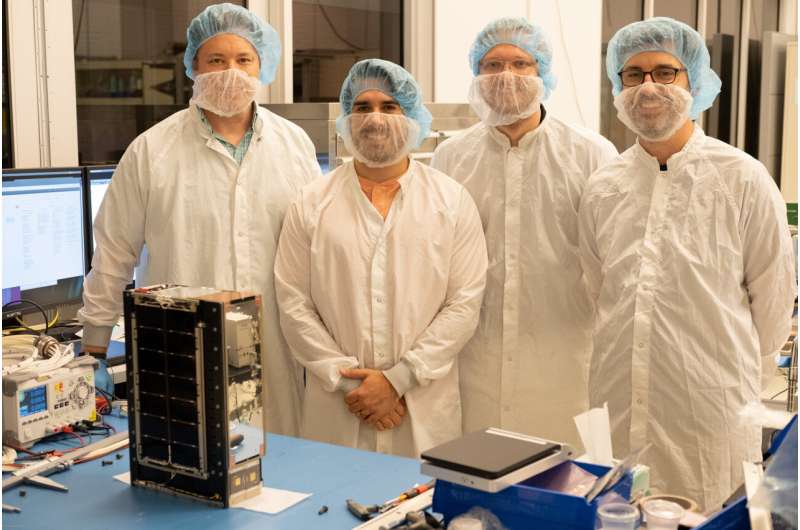
The Lunar Polar Hydrogen Mapper (LunaH-Map) mission is one of the tiniest NASA planetary science missions but has big science goals. Previous missions and studies have identified the presence of water-ice at the Moon's poles. However, there are still unanswered questions about how much water-ice is contained within permanently shadowed regions.
It is also unknown how much water-ice might be retained at depth throughout illuminated regions of the lunar South Pole. LunaH-Map will answer those questions by entering orbit around the Moon and producing a neutron map that will reveal where and how much water-ice is hidden across the lunar South Pole.
LunaH-Map will help us understand the origins of water on the Moon and how it has been redistributed since the Moon's formation. The maps will also be used to plan future missions and landing sites for robotic and human water-ice prospecting.
Explore further
Citation: NASA Artemis1 to carry ASU CubeSat into space (2022, August 26) retrieved 26 August 2022 from https://phys.org/news/2022-08-nasa-artemis1-asu-cubesat-space.html
This document is subject to copyright. Apart from any fair dealing for the purpose of private study or research, no part may be reproduced without the written permission. The content is provided for information purposes only.
https://news.google.com/__i/rss/rd/articles/CBMiQmh0dHBzOi8vcGh5cy5vcmcvbmV3cy8yMDIyLTA4LW5hc2EtYXJ0ZW1pczEtYXN1LWN1YmVzYXQtc3BhY2UuaHRtbNIBAA?oc=5
2022-08-26 20:14:48Z
1546159078
Kamis, 25 Agustus 2022
NASA prepare for first moon launch in 50 years - 1News
https://news.google.com/__i/rss/rd/articles/CBMiK2h0dHBzOi8vd3d3LnlvdXR1YmUuY29tL3dhdGNoP3Y9b1laQ0VlR00xbG_SAQA?oc=5
2022-08-25 22:00:32Z
1546159078
Found On Mars: Rocks ‘Altered by Water’ That Could Contain Traces Of Ancient Life - Forbes

Did the red planet ever host life? It’s a question that’s hard to answer from 250 million miles away, but NASA’s Perseverance rover may have just gotten closer to the answer.
On Mars since dramatically parachuting in on February 18, 2021, the truck-sized robot is currently exploring the river delta in Jezero crater, but a new paper published today in Science reveals more about the rock samples it’s already collected from the crater’s floor.
Intriguingly, some of them appear to have been geochemically altered by liquid water.
The news comes as NASA and the European Space Agency finalize plans for the Mars Sample Return mission, the first-ever return trip to Mars in 2027 that will bring these very rock samples back to Earth in 2033 for study by astrobiologists.
“These rocks on Mars have been aqueously altered by water, so there are carbonates, iron oxides and salts that have formed within these rocks,” said Amy Williams, an astrobiologist and professor of geology at the University of Florida and one of the planners for the Perseverance mission. “Those provide different geochemical micro-environments that organisms could exploit if they were present.”
Though it’s now dry, cold and has high radiation, Jezero crater was once home to a lake, possibly for millions of years. Was it habitable? Scientists believe that, yes, a watery Mars could have supported life billions of years ago.
The hunt for biosignatures
These samples from Perseverance’s first science campaign show a crater floor that has eroded much more than expected, revealing igneous rocks formed by lava and magma. Perseverance’s scientists had expected to find only the softer sedimentary rocks that would have made up the lake bed.
This is a bonus because the igneous rocks discovered—specifically the samples from formations called Máaz and Séítah—likely predate the river delta.
This rock, called “Máaz” (the Navajo word for “Mars”), is the first feature of scientific interest ... [+] to be studied by NASA’s Perseverance Mars rover.
“The aqueous alteration of the minerals has the potential to record biosignatures,” said Williams. Biosignatures are evidence for past or present life. “We have organisms on Earth that live in very similar kinds of rocks,” said Williams.
We’re talking microorganisms like bacteria and archaea, which are capable of living in extreme environments all over Earth. “Some microorganisms live in, and on, igneous rocks like those we characterized in the Jezero crater floor,” said Williams. “Some of these organisms even live kilometers down in the subsurface!”
When was Mars wet?
“Our best guess is that water started to dry up 3.8 to 3.5 billion years ago,” said Williams about Jezero Crater. However, the error bar is big. From the NASA Curiosity rover’s exploration of Gale crater scientists think its lake may have been active for millions to tens of millions of years.
“The really exciting thing is that the return of these samples from Jezero will give us samples to age date,” said Williams. “These will give us brackets on when the delta formed, how long it was active and when water—at least at Jezero—dried up. These findings are going to be profound!”
Mars Sample Return: the plan
It’s a mission with options. NASA doesn’t know how long Perseverance will keep going on Mars, so for now the rover is free to go collect 10 samples or so and leave them in a cache in Jezero Crater for a rocket-equipped lander to come pick them up. The worst case scenario is that scientists will get its samples. Just incase Perseverance can’t help out a couple of Ingenuity-class Mars Helicopters will make the trip, too.
This illustration shows the Sample Retrieval Lander, which would carry a small rocket (about 10 ... [+] feet, or 3 meters, tall) called the Mars Ascent Vehicle to the Martian surface. After using a robotic arm to load the rover’s sealed sample tubes into a container in the nose cone of the rocket, the lander would launch the Mars Ascent Vehicle into orbit around the Red Planet.
However, Perseverance is actually doubling-up on its samples. So while it will lay one set in Jezero Crater, the plan is for Perseverance to travel outside of the crater to a place called Midway. If it makes it there, and manages to collect another 20 or so samples, it can deliver them direct to the lander a much larger collection of samples from a wider suite of environments. Even it it doesn’t survive that long, the lander will be able to land just 50ft. from wherever the most interesting cache of samples exists—either in Jezero crater or outside of it.
Beyond Jezero
“So far the only information we have about those rocks is what we can detect about texture and mineralogy from orbital observations,” said Williams. So far geologists have found basement rock and large rock fragments possibly from meteor strikes that caused Jezero. “There will be far more diversity and nuance discovered in these units once we have our wheels on the ground outside of Jezero,” said Williams. “Before then Perseverance is exploring the Jezero delta, which is made up of sedimentary rocks.”
Once back on Earth they will help scientists establish a geological record crucial in understanding Mars’s environmental evolution and possibly its prebiotic chemistry and biology.
Wishing you clear skies and wide eyes.
https://news.google.com/__i/rss/rd/articles/CBMikAFodHRwczovL3d3dy5mb3JiZXMuY29tL3NpdGVzL2phbWllY2FydGVyZXVyb3BlLzIwMjIvMDgvMjUvd2FzLXRoZXJlLWxpZmUtb24tbWFycy1uZXctcm9ja3MtYWx0ZXJlZC1ieS1saXF1aWQtd2F0ZXItd2lsbC1yZXR1cm4tdG8tZWFydGgtaW4tMjAzMy_SAQA?oc=5
2022-08-25 18:00:28Z
1544891939
Rabu, 24 Agustus 2022
Polyethylene furanoate is coming! Don't be scared. - Office for Science and Society

If you are scared of chemical terminology, you may think you are in for a bumpy ride. But fear not, you do not need a degree in chemistry to follow this discussion. Buckle up, and let’s go.
Granted, the term “polyethylene furanoate (PEF)” doesn’t exactly roll off the tongue. But bottles and packaging materials made from this plastic may soon be rolling off assembly lines. Why? Because it is recyclable, and more importantly, it can be made from bio-waste such as wheat straw instead of from petroleum. The hope is that it can, at least to some extent, replace polyethylene terephthalate (PET), the petroleum-derived plastic that is used to produce some 600 billion bottles every year. As a bonus, a “cradle-to-grave analysis” shows that compared with the production of PET, PEF is associated with reduced greenhouse gas emissions.
While life today without plastics is unimaginable, their once common description as “miracle materials” needs an asterisk. Most plastics are made from non-renewable petroleum, and their improper disposal has become an environmental calamity. Views of beaches with washed-up plastic waste, turtles snared in discarded fishing nets, and the giant plastic “garbage patch” in the middle of the Pacific Ocean is very disturbing. So is the knowledge that in the environment, plastics can degrade into “microplastics” that can end up in our food supply, and therefore in us. Ditto for some additives such as phthalate plasticizers and plastic components such as bisphenol A (BPA), which has raised various health concerns. The plastics industry, aware of these problems and the associated adverse publicity, is taking steps to address these issues. But there are many challenges.
Let’s start by doing an autopsy of a PET bottle, identifiable by the number 1 in the triangular recycling logo. This plastic is made of a polymer of alternating units of ethylene glycol and terephthalic acid linked in a long chain. Ethylene glycol is made from ethylene oxide, which in turn is made by the “catalytic cracking” of petroleum. The precursor of terephthalic acid is para-xylene which is distilled from petroleum. Both processes require the input of energy that comes from burning fossil fuels. One way to “green up” PET production is to derive the ethylene glycol from a renewable resource, namely bioethanol from the fermentation of sugar. This is the technology that allowed Coca-Cola to come up with its much-hyped “plant bottle.” Actually, PET is only 30% ethylene glycol by weight, and its production from bioethanol involves a lot of chemical manipulation. The ethanol is first converted into ethylene, then into ethylene oxide, and then into ethylene glycol. There is a significant environmental footprint here. And of course, the terephthalic acid that makes up 70% of the plastic comes from petroleum.
That raises the question of finding an alternative to terephthalic acid that does not come from petroleum. And researchers have come up with one! Furan dicarboxylic acid reacts with ethylene glycol just like terephthalic acid does and produces polyethylene furanoate (PEF), a plastic that can be recycled, allows less carbon dioxide and oxygen to pass through than PET, and has higher resistance to mechanical strain which means that bottles and packaging materials can be made thinner. Most importantly, furan dicarboxylic acid be made from plant material such as wheat straw or wood waste through a sequence of reactions made possible by proprietary metal catalysts. There is, however, one big drawback. Cost! Currently, it costs roughly eight times as much to produce PEF than PET. That gap will be reduced as the manufacture of PEF is scaled up.
There is yet another issue that needs attention. As mentioned, the ethylene needed to make ethylene glycol can be produced from bioethanol rather than from petroleum, which is a step in the right direction. But regardless of the source, the ethylene has to be converted into ethylene oxide which is then used to produce ethylene glycol. The issue is that ethylene oxide is a reproductive toxin, is mutagenic and carcinogenic. Indeed, there are concerns that the increased cancer rates seen around some chemical plants are due to the release of ethylene oxide into the air. Furthermore, the production of ethylene oxide releases large amounts of carbon dioxide.
So, can ethylene glycol be made without going through ethylene oxide as an intermediate? Not only can that be done, but the starting material can be biomass. Through a sequence of reactions, with the aid of tungsten-based catalysts, plant material can be converted into glycolaldehyde which in turn can be hydrogenated to yield ethylene glycol. The whole process releases less carbon dioxide than the production of ethylene oxide. Is there a fly in the ointment? So far, the synthesis of ethylene glycol by this process is only at the pilot plant stage and it remains to be seen whether it can prove to be practically and financially viable.
Plastics are here to stay, but problems with their production and use, particularly single-use, have to be addressed. Science comes to the fore when backs are against the wall. Elimination of petroleum as a source material is not in the near future, but there is no question that in the long run research will lead to more biodegradable, recyclable, compostable plastics made from renewable resources. You may soon be drinking from a polyethylene furanoate bottle. Of course, one solution to the plastic problem is not to buy that bottled beverage in the first place.
https://news.google.com/__i/rss/rd/articles/CBMiaWh0dHBzOi8vd3d3Lm1jZ2lsbC5jYS9vc3MvYXJ0aWNsZS9lbnZpcm9ubWVudC1jbGltYXRlLWNoYW5nZS9wb2x5ZXRoeWxlbmUtZnVyYW5vYXRlLWNvbWluZy1kb250LWJlLXNjYXJlZNIBAA?oc=5
2022-08-24 18:00:00Z
CAIiEAlyAe7x0AdEnBVu1WRAQ0YqGQgEKhAIACoHCAowyOqjCzCK9bsDMNrGhQc
All systems go for Artemis 1 mission to Moon - Phys.org
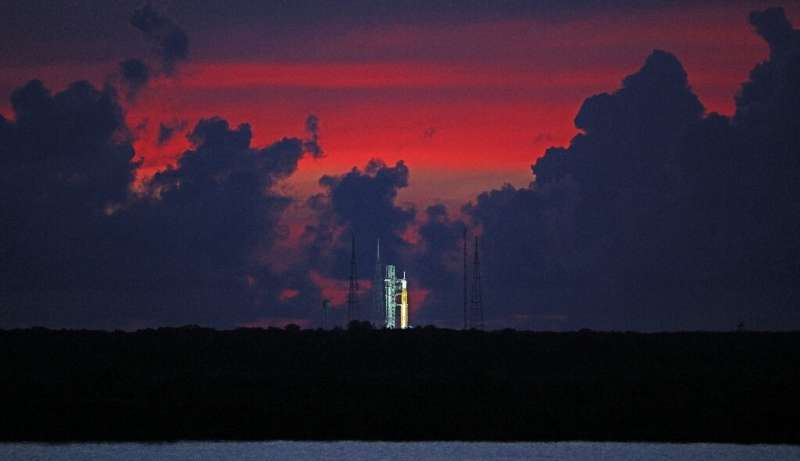
Fifty years after the last Apollo mission, the Artemis program is poised to take up the baton of lunar exploration with a test launch on Monday of NASA's most powerful rocket ever.
The goal is to return humans to the Moon for the first time since the last Apollo mission in 1972—and eventually to Mars.
The 322-foot (98-meter) Space Launch System (SLS) rocket is scheduled to blast off at 8:33 am (1233 GMT) from the Kennedy Space Center (KSC) in Florida.
The mission, more than a decade in the planning, may be uncrewed, but is highly symbolic for NASA, which has been under pressure from China and private rivals such as SpaceX.
Hotels around Cape Canaveral are booked solid with between 100,000 and 200,000 spectators expected to attend the launch.
The massive orange-and-white rocket has been sitting on KSC's Launch Complex 39B for a week.
"Ever since we rolled out to the pad last week, you can feel the excitement, the energy," said Janet Petro, director of KSC. "It's really, really palpable."
The objective of the flight, baptized Artemis 1, is to test the SLS and the Orion crew capsule that sits atop the rocket.
Mannequins equipped with sensors will take the place of crew members, recording acceleration, vibration and radiation levels.
Cameras will capture every moment of the 42-day trip and include a selfie of the spacecraft with the Moon and Earth in the background.
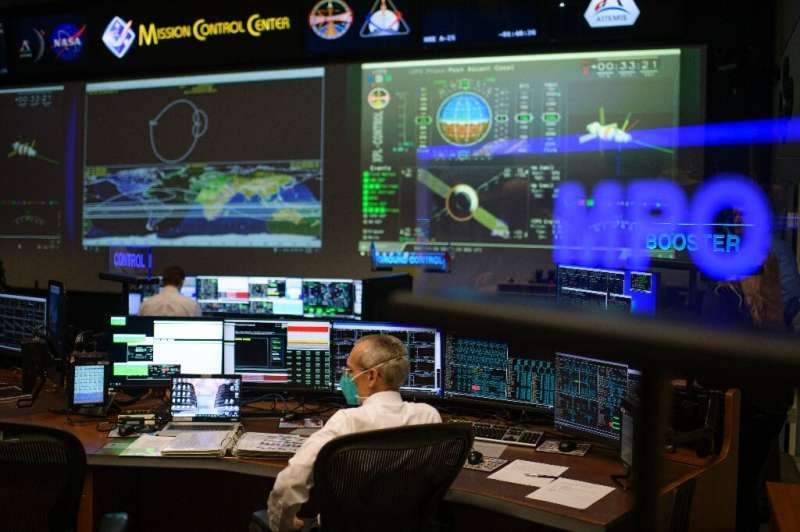
Splashdown in Pacific
The Orion capsule will orbit around the Moon, coming within 60 miles (100 kilometers) at its closest approach and then firing its engines to get to a distance 40,000 miles beyond, a record for a spacecraft rated to carry humans.
One of the primary objectives of the mission is to test the capsule's heat shield, which at 16 feet in diameter is the largest ever built.
On its return to the Earth's atmosphere, the heat shield will have to withstand a speed of 25,000 miles per hour and a temperature of 5,000 degrees Fahrenheit (2,760 degrees Celsius).
Orion, its descent slowed by parachutes, will end its voyage with a splashdown off the coast of San Diego in the Pacific.
Monday's liftoff will be at the mercy of the weather, which can be unpredictable in Florida at this time of year, and NASA has built in a two-hour launch window.

If the rocket is unable to take off on Monday, September 2 and 5 have been penciled in as alternative flight dates.
Otherwise, it's all systems go.
NASA gave the green light for the mission on Tuesday after a detailed inspection known as a flight readiness review.
That doesn't mean things can't go wrong with a rocket and a capsule flying for the first time.
'Inherent risk'
"We're doing something that is incredibly difficult to do and does carry inherent risk in it," said Mike Sarafin, the Artemis 1 mission manager.
Because it is an uncrewed flight, Sarafin said the mission will continue in conditions that would not be acceptable for a flight with astronauts.
"If we had a failed solar array deployment we would proceed, and that is something that we wouldn't necessarily do on a crewed flight," he said.
-

A mock-up trainer module of Gateway's Habitation and Logistics Outpost (HALO) module in Houston, Texas. -
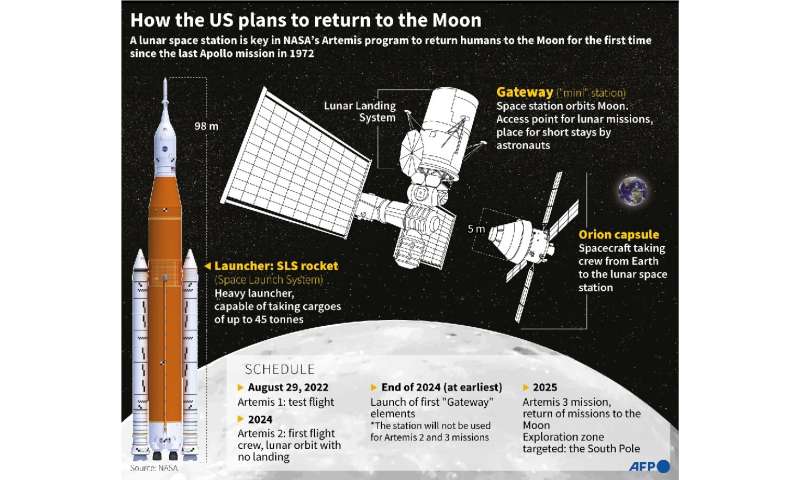
Graphic on NASA's Artemis program to establish a mini-space station orbiting the Moon before landing on the surface in 2024.
A complete failure would be devastating for a program that is costing $4.1 billion per launch and is already running years behind schedule.
The next mission, Artemis 2, will take astronauts into orbit around the Moon without landing on its surface. The crew of Artemis 3 is to land on the Moon in 2025 at the earliest.
While the Apollo astronauts who walked on the Moon were exclusively white men, the Artemis program plans to include the first woman and person of color.
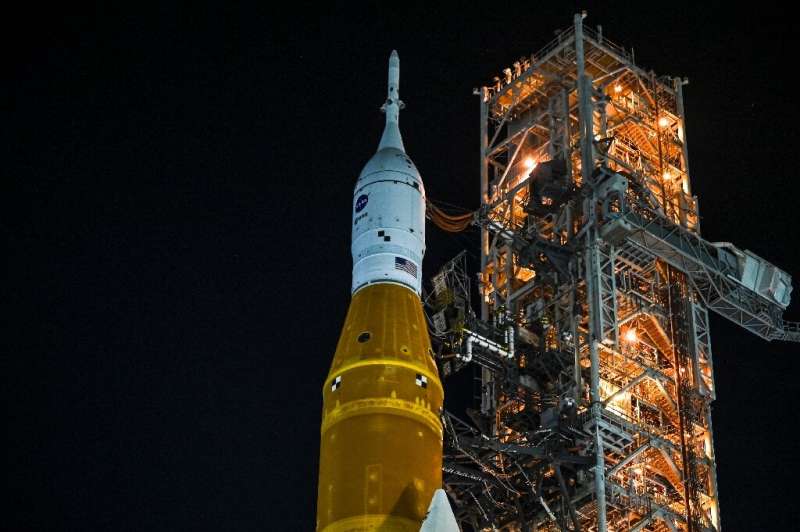
And since humans have already visited the Moon, Artemis has its sights set on another lofty goal—an eventual crewed mission to Mars.
The Artemis program is to establish a lasting human presence on the Moon with an orbiting space station known as Gateway and a base on the surface.
Gateway would serve as a staging and refueling station for a voyage to Mars that would take a minimum of several months.
"I think it's going to inspire even more than Apollo did," Bob Cabana, associate NASA administrator and a former astronaut, said of Artemis. "It's going to be absolutely outstanding."
Explore further
© 2022 AFP
Citation: All systems go for Artemis 1 mission to Moon (2022, August 24) retrieved 24 August 2022 from https://phys.org/news/2022-08-artemis-mission-moon.html
This document is subject to copyright. Apart from any fair dealing for the purpose of private study or research, no part may be reproduced without the written permission. The content is provided for information purposes only.
https://news.google.com/__i/rss/rd/articles/CBMiN2h0dHBzOi8vcGh5cy5vcmcvbmV3cy8yMDIyLTA4LWFydGVtaXMtbWlzc2lvbi1tb29uLmh0bWzSAQA?oc=5
2022-08-24 07:47:36Z
1530497579
All systems go for Artemis 1 mission to Moon - RFI English

Issued on: Modified:
Washington (AFP) – Fifty years after the last Apollo mission, the Artemis program is poised to take up the baton of lunar exploration with a test launch on Monday of NASA's most powerful rocket ever.
The goal is to return humans to the Moon for the first time since the last Apollo mission in 1972 -- and eventually to Mars.
The 322-foot (98-meter) Space Launch System (SLS) rocket is scheduled to blast off at 8:33 am (1233 GMT) from the Kennedy Space Center (KSC) in Florida.
The mission, more than a decade in the planning, may be uncrewed, but is highly symbolic for NASA, which has been under pressure from China and private rivals such as SpaceX.
Hotels around Cape Canaveral are booked solid with between 100,000 and 200,000 spectators expected to attend the launch.
#photo1The massive orange-and-white rocket has been sitting on KSC's Launch Complex 39B for a week.
"Ever since we rolled out to the pad last week, you can feel the excitement, the energy," said Janet Petro, director of KSC. "It's really, really palpable."
The objective of the flight, baptized Artemis 1, is to test the SLS and the Orion crew capsule that sits atop the rocket.
#photo2Mannequins equipped with sensors will take the place of crew members, recording acceleration, vibration and radiation levels.
Cameras will capture every moment of the 42-day trip and include a selfie of the spacecraft with the Moon and Earth in the background.
Splashdown in Pacific
The Orion capsule will orbit around the Moon, coming within 60 miles (100 kilometers) at its closest approach and then firing its engines to get to a distance 40,000 miles beyond, a record for a spacecraft rated to carry humans.
#photo3One of the primary objectives of the mission is to test the capsule's heat shield, which at 16 feet in diameter is the largest ever built.
On its return to the Earth's atmosphere, the heat shield will have to withstand a speed of 25,000 miles per hour and a temperature of 5,000 degrees Fahrenheit (2,760 degrees Celsius).
Orion, its descent slowed by parachutes, will end its voyage with a splashdown off the coast of San Diego in the Pacific.
Monday's liftoff will be at the mercy of the weather, which can be unpredictable in Florida at this time of year, and NASA has built in a two-hour launch window.
If the rocket is unable to take off on Monday, September 2 and 5 have been penciled in as alternative flight dates.
#photo4Otherwise, it's all systems go.
NASA gave the green light for the mission on Tuesday after a detailed inspection known as a flight readiness review.
That doesn't mean things can't go wrong with a rocket and a capsule flying for the first time.
'Inherent risk'
"We're doing something that is incredibly difficult to do and does carry inherent risk in it," said Mike Sarafin, the Artemis 1 mission manager.
#photo5Because it is an uncrewed flight, Sarafin said the mission will continue in conditions that would not be acceptable for a flight with astronauts.
"If we had a failed solar array deployment we would proceed, and that is something that we wouldn't necessarily do on a crewed flight," he said.
A complete failure would be devastating for a program that is costing $4.1 billion per launch and is already running years behind schedule.
The next mission, Artemis 2, will take astronauts into orbit around the Moon without landing on its surface. The crew of Artemis 3 is to land on the Moon in 2025 at the earliest.
While the Apollo astronauts who walked on the Moon were exclusively white men, the Artemis program plans to include the first woman and person of color.
And since humans have already visited the Moon, Artemis has its sights set on another lofty goal -- an eventual crewed mission to Mars.
Gateway would serve as a staging and refueling station for a voyage to Mars that would take a minimum of several months.
"I think it's going to inspire even more than Apollo did," Bob Cabana, associate NASA administrator and a former astronaut, said of Artemis. "It's going to be absolutely outstanding."
© 2022 AFP
https://news.google.com/__i/rss/rd/articles/CBMiX2h0dHBzOi8vd3d3LnJmaS5mci9lbi9zY2llbmNlLWVudmlyb25tZW50LzIwMjIwODI0LWFsbC1zeXN0ZW1zLWdvLWZvci1hcnRlbWlzLTEtbWlzc2lvbi10by1tb29u0gFfaHR0cHM6Ly9hbXAucmZpLmZyL2VuL3NjaWVuY2UtZW52aXJvbm1lbnQvMjAyMjA4MjQtYWxsLXN5c3RlbXMtZ28tZm9yLWFydGVtaXMtMS1taXNzaW9uLXRvLW1vb24?oc=5
2022-08-24 06:08:25Z
1530497579
